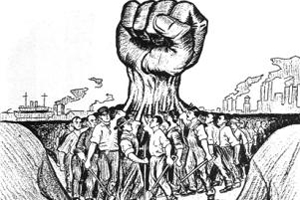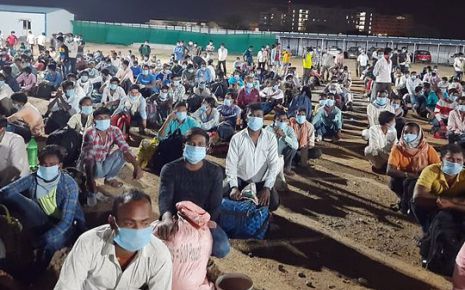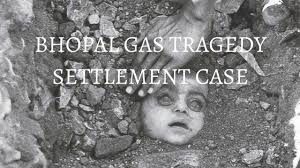Commentary on Steel Authority of India Ltd v/s Public Association of Water Front Workers
Respondent: National Union of Water Front Workers (NUWW)
A short brief about the case- Facts, Issues, Arguments and the Final Judgement.
Steel Authority of India Ltd. v Public Association of Water Front Workers
Case Citation: Steel Authority of India Ltd. v Public Association of Water Front Workers, (2001) 7 SCC 1
Court: Supreme Court of India
Date of Decision: August 31, 2001
Parties:
Appellant: Steel Authority of India Ltd. (SAIL)
Overall Background:
Steel Authority of India Ltd. v Public Association of Water Front Workers is a landmark case that delves into the complex intersection of labor rights, collective bargaining, and the right to strike in the context of essential services. This case, which was decided by the Supreme Court of India on August 31, 2001, has had a profound impact on the legal landscape concerning industrial disputes and the constraints on the exercise of the right to strike. In this comment, we will provide an in-depth analysis of the case, including its facts, issues, arguments, and the final judgment, while also discussing its broader implications for labor law and public interest.
Detailed facts of the case:
The case arose from a contentious dispute between Steel Authority of India Ltd. (SAIL), a prominentpublic sector undertaking engaged in steel production, and the National Unionof Water Front Workers (NUWW), a labor union representing the workers at SAIL.
The dispute originated from a series of demands presented by NUWW, which ultimately led to the initiation of a strike by the union.
Key Issues: The central issue that:
confronted the Supreme Court in this case was the inherent conflict between the right of workers to strike as a means of collective bargaining and the management's prerogative to ensure the efficient operation of essential services without undue disruptions. The court had to grapple with the question of whether the right to strike could be curtailed or restricted in situations where its exercise posed a significant threat to public interest and the provision of essential services.
Arguments Presented:
Legal Analysis and Implications:
This case comment delves into the legal framework surrounding the right to strike and the Court's balanced approach to safeguarding both the interests of workers and the broader public interest. The Court recognized the fundamental right of workers to form associations and engage in collective bargaining as an integral aspect of a democratic society. However, it also emphasized the responsibility that comes with exercising this right within the bounds of the law.
The Supreme Court's ruling laid down the crucial principle that strikes in public utility services, including those related to essential commodities like steel production, could be regulated or restricted if they posed a threat to public interest. In such cases, the management's ability to efficiently run their operations and address public concerns was given significant weight. This decision highlighted the need for strikes in such industries to be carried out with a sense of responsibility and accountability.
The significance of Steel Authority of India Ltd. v Public Association of Water Front Workers lies in its ability to strike a delicate balance between safeguarding the rights of workers and protecting the broader public interest. It established clear guidelines for the exercise of the right to strike, ensuring that industrial disputes could be resolved while preventing disproportionate harm to public welfare.
In conclusion, this case marked a pivotal moment in Indian labor law by defining the parameters within which the right to strike can be exercised. It underscored the importance of responsible and reasonable strike actions, especially in sectors critical to the nation's functioning. Steel Authority of India Ltd. v Public Association of Water Front Workers remains a significant precedent in labor law jurisprudence and serves as a testament to the Indian legal system's commitment to upholding both workers' rights and the interests of the public at large.
Comment:
On account of Steel Authority of India Ltd. v Public Association of Water Front Workers, the SC resolved the essential issues encompassing work privileges, the rights of labourers, aggregate haggling, and the right to strike. The case led to a dispute between Steel Authority of India Ltd. (SAIL) National Union of Water Front Workers (NUWW) concerning different demands set forth by the association and their resulting strike action.
The legal question before the Court was the fairness between the right of laborers to strike as a type of collective bargaining and the management's right to track to run a modern foundation proficiently without unjustifiable disturbances. The Court's decision on this situation altogether impacted the law impacting industrial disputes and the constraints on the activity of the right to strike.
The Court recognized the fundamental right of laborers to frame associations and participate in aggregate bargaining as a fundamental piece of democracy. Nonetheless, it additionally perceived that this right should be practiced reasonably, mindfully, and within the limits of the law. The Court stressed that the right to strike is definitely not an outright right yet is dependent upon specific limitations, particularly with regards to essential services, whenever disrupted, could seriously affect public interest.
For this situation, the Court laid out the rule that strikes in open utility administrations, including those connected with essential commodities like steel manufacturing, could be controlled or restricted assuming they risk the public interest. The Court held that in such cases, the management's capacity to run the business proficiently and address public issues should be considered, and the right to strike ought to be practiced with a sense of obligation and responsibility.
The Court in the case of Steel Authority of India Ltd. v Public Association of Water Front workers explained the legitimate system encompassing the right to strike and start a trend for assessing the authenticity of strikes in essential sectors. It found some kind of harmony between safeguarding the interests of laborers and shielding the more extensive public interest. This case comment recognizes the Court's nuanced approach in upholding the right to strike while perceiving its restrictions, especially in ventures that are very crucial to the country's working. All in all, the case denoted an essential second in Indian Labour law by characterizing the forms inside which the right to strike can be worked out, guaranteeing that industrial disputes are settled while forestalling unbalanced mischief to the public interest.
Written By: Zaib Sofi, BA, LLB
A short brief about the case- Facts, Issues, Arguments and the Final Judgement.
- The fundamental issue before the court was the conflict between the workers' right to strike as a form of collective bargaining and the management's right to ensure the efficient functioning of essential services without undue disruption. The court needed to determine whether the right to strike could be curtailed in situations where it posed a threat to public interest and essential services.
- SAIL argued that while it recognized the workers' right to strike, such a right should be exercised responsibly, especially in essential sectors that could adversely impact public interest and services.
- NUWW contended that the right to strike was a fundamental right of workers and that it was a legitimate method of demanding better working conditions and negotiating with management.
- The Supreme Court ruled in favour of SAIL, upholding the principle that the right to strike is not an absolute right and can be subjected to certain limitations in cases involving essential services. The court highlighted that the right to strike must be exercised responsibly, taking into consideration the potential disruption to public interest and services.
Steel Authority of India Ltd. v Public Association of Water Front Workers
Case Citation: Steel Authority of India Ltd. v Public Association of Water Front Workers, (2001) 7 SCC 1
Court: Supreme Court of India
Date of Decision: August 31, 2001
Parties:
Appellant: Steel Authority of India Ltd. (SAIL)
Overall Background:
Steel Authority of India Ltd. v Public Association of Water Front Workers is a landmark case that delves into the complex intersection of labor rights, collective bargaining, and the right to strike in the context of essential services. This case, which was decided by the Supreme Court of India on August 31, 2001, has had a profound impact on the legal landscape concerning industrial disputes and the constraints on the exercise of the right to strike. In this comment, we will provide an in-depth analysis of the case, including its facts, issues, arguments, and the final judgment, while also discussing its broader implications for labor law and public interest.
Detailed facts of the case:
The case arose from a contentious dispute between Steel Authority of India Ltd. (SAIL), a prominentpublic sector undertaking engaged in steel production, and the National Unionof Water Front Workers (NUWW), a labor union representing the workers at SAIL.
The dispute originated from a series of demands presented by NUWW, which ultimately led to the initiation of a strike by the union.
Key Issues: The central issue that:
confronted the Supreme Court in this case was the inherent conflict between the right of workers to strike as a means of collective bargaining and the management's prerogative to ensure the efficient operation of essential services without undue disruptions. The court had to grapple with the question of whether the right to strike could be curtailed or restricted in situations where its exercise posed a significant threat to public interest and the provision of essential services.
Arguments Presented:
- SAIL's Perspective: Steel Authority of India Ltd. argued that while it
acknowledged the workers' right to strike as a legitimate tool for asserting
their demands, this right should be exercised responsibly, especially in
industries and sectors that could potentially harm public interest and essential
services if disrupted. SAIL contended that the management's ability to operate
the business efficiently and address public concerns should not be compromised
by unchecked strike actions.
- NUWW's Stand: The National Union of Water Front Workers, on the other hand, vigorously maintained that the right to strike was a fundamental and constitutionally protected right of workers. They argued that striking was a legitimate method for laborers to demand better working conditions, negotiate with management, and exercise their collective bargaining power.
Legal Analysis and Implications:
This case comment delves into the legal framework surrounding the right to strike and the Court's balanced approach to safeguarding both the interests of workers and the broader public interest. The Court recognized the fundamental right of workers to form associations and engage in collective bargaining as an integral aspect of a democratic society. However, it also emphasized the responsibility that comes with exercising this right within the bounds of the law.
The Supreme Court's ruling laid down the crucial principle that strikes in public utility services, including those related to essential commodities like steel production, could be regulated or restricted if they posed a threat to public interest. In such cases, the management's ability to efficiently run their operations and address public concerns was given significant weight. This decision highlighted the need for strikes in such industries to be carried out with a sense of responsibility and accountability.
The significance of Steel Authority of India Ltd. v Public Association of Water Front Workers lies in its ability to strike a delicate balance between safeguarding the rights of workers and protecting the broader public interest. It established clear guidelines for the exercise of the right to strike, ensuring that industrial disputes could be resolved while preventing disproportionate harm to public welfare.
In conclusion, this case marked a pivotal moment in Indian labor law by defining the parameters within which the right to strike can be exercised. It underscored the importance of responsible and reasonable strike actions, especially in sectors critical to the nation's functioning. Steel Authority of India Ltd. v Public Association of Water Front Workers remains a significant precedent in labor law jurisprudence and serves as a testament to the Indian legal system's commitment to upholding both workers' rights and the interests of the public at large.
Comment:
On account of Steel Authority of India Ltd. v Public Association of Water Front Workers, the SC resolved the essential issues encompassing work privileges, the rights of labourers, aggregate haggling, and the right to strike. The case led to a dispute between Steel Authority of India Ltd. (SAIL) National Union of Water Front Workers (NUWW) concerning different demands set forth by the association and their resulting strike action.
The legal question before the Court was the fairness between the right of laborers to strike as a type of collective bargaining and the management's right to track to run a modern foundation proficiently without unjustifiable disturbances. The Court's decision on this situation altogether impacted the law impacting industrial disputes and the constraints on the activity of the right to strike.
The Court recognized the fundamental right of laborers to frame associations and participate in aggregate bargaining as a fundamental piece of democracy. Nonetheless, it additionally perceived that this right should be practiced reasonably, mindfully, and within the limits of the law. The Court stressed that the right to strike is definitely not an outright right yet is dependent upon specific limitations, particularly with regards to essential services, whenever disrupted, could seriously affect public interest.
For this situation, the Court laid out the rule that strikes in open utility administrations, including those connected with essential commodities like steel manufacturing, could be controlled or restricted assuming they risk the public interest. The Court held that in such cases, the management's capacity to run the business proficiently and address public issues should be considered, and the right to strike ought to be practiced with a sense of obligation and responsibility.
The Court in the case of Steel Authority of India Ltd. v Public Association of Water Front workers explained the legitimate system encompassing the right to strike and start a trend for assessing the authenticity of strikes in essential sectors. It found some kind of harmony between safeguarding the interests of laborers and shielding the more extensive public interest. This case comment recognizes the Court's nuanced approach in upholding the right to strike while perceiving its restrictions, especially in ventures that are very crucial to the country's working. All in all, the case denoted an essential second in Indian Labour law by characterizing the forms inside which the right to strike can be worked out, guaranteeing that industrial disputes are settled while forestalling unbalanced mischief to the public interest.
Written By: Zaib Sofi, BA, LLB
Law Article in India
Legal Question & Answers
Lawyers in India - Search By City
LawArticles
How To File For Mutual Divorce In Delhi

How To File For Mutual Divorce In Delhi Mutual Consent Divorce is the Simplest Way to Obtain a D...
Increased Age For Girls Marriage

It is hoped that the Prohibition of Child Marriage (Amendment) Bill, 2021, which intends to inc...
Facade of Social Media

One may very easily get absorbed in the lives of others as one scrolls through a Facebook news ...
Section 482 CrPc - Quashing Of FIR: Guid...

The Inherent power under Section 482 in The Code Of Criminal Procedure, 1973 (37th Chapter of t...
The Uniform Civil Code (UCC) in India: A...

The Uniform Civil Code (UCC) is a concept that proposes the unification of personal laws across...
Role Of Artificial Intelligence In Legal...

Artificial intelligence (AI) is revolutionizing various sectors of the economy, and the legal i...








Please Drop Your Comments